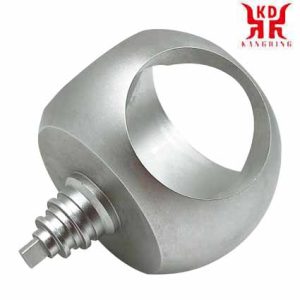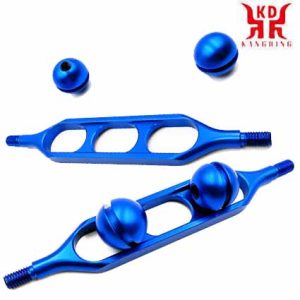- Solid Edge CAM Pro: Mukautuva koneistus
2. What is adaptive machining?
3. Differences between traditional and adaptive machining
4. Benefits of Adaptive Machining in Solid Edge CAM Pro
5. Differences between adaptive and traditional machining with Solid Edge CAM Pro

Mukautuva CNC-työstö

Adaptive part milling design
Solid Edge CAM Pro: Mukautuva koneistus
Mukautuva koneistus on uusi toiminto nopeaan jyrsintään Solid Edge CAM Prossa. Tämä mukautuva työstötekniikka tarjoaa älykkään leikkauskuvion, joka mukautuu vähitellen leikkausalueen reunoihin tasaisilla ja tasaisilla työstöradoilla. nestettä.
What is adaptive machining?
In Solid Edge CAM Pro (Cam Pro) the adaptive machining operation has already loaded by default some values that help to carry out this operation: the tool diameter percentage is marked at 10% and the depth of cut is at 95% of the length of the cutting edge.
The best way to machine with the adaptive method is to use a depth of cut between two to three times the diameter of the tool and with a flat cut pass value between 8% ja 12% of the diameter of the tool.
CAM Pro will calculate the best trajectory trying to keep the pass flat and constant. Adaptive machining enters closed areas helically and radially when the area is open.
Differences between traditional and adaptive machining
Compared to traditional cutting patterns, Solid Edge CAM Pro’s adaptive machining does not omit the percentage value of the diameter that it uses when cutting from one toolpath to another. It is the reason why it is a technique oriented to high speed machining.
Another characteristic in the field of advances and cutting speeds is chip thickness. The tool always sets the cutting speed according to the material to be milled and a thin chip thickness allows to increase the advance, notably increasing the speed of the movement in the trajectories.
Benefits of Adaptive Machining in Solid Edge CAM Pro
The sum of the characteristics of the percentage of smaller flat diameter and smaller chip thickness, result in a lower power consumption in the machine. In order to take advantage of this “excess” power, the solution is to increase the depth of cut of the tool.
Lisäksi, the use of a small chip thickness and a high chip length (the depth of cut is greater) the heat resulting from the cut does not get to be transmitted with the same speed to the tool, so this type can be used. operations without refrigeration.
Benefits of Adaptive Machining in Solid Edge CAM Pro
The sum of the characteristics of the percentage of smaller flat diameter and smaller chip thickness, result in a lower power consumption in the machine. In order to take advantage of this “excess” power, the solution is to increase the depth of cut of the tool.
Lisäksi, the use of a small chip thickness and a high chip length (the depth of cut is greater) the heat resulting from the cut does not get to be transmitted with the same speed to the tool. so this type of operation can be used without refrigeration.
It is also recommended to use the use of this “surplus” of power to machine hard materials using this technique, since the wear of the tool will be less and the power consumed will not be triggered. being sometimes the only way to machine this type of roughing materials without resorting to the use of specific tools whose cost is much higher.
 English
English العربية
العربية 中文(漢字)
中文(漢字) Čeština
Čeština Dansk
Dansk Nederlands
Nederlands Suomi
Suomi Français
Français Deutsch
Deutsch Italiano
Italiano 日本語
日本語 ಕನ್ನಡ
ಕನ್ನಡ 한국어
한국어 Português
Português Русский
Русский Slovenčina
Slovenčina Español
Español Svenska
Svenska Türkçe
Türkçe

